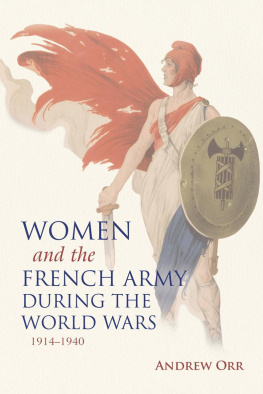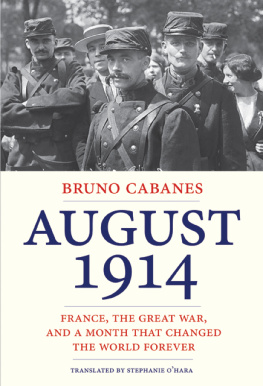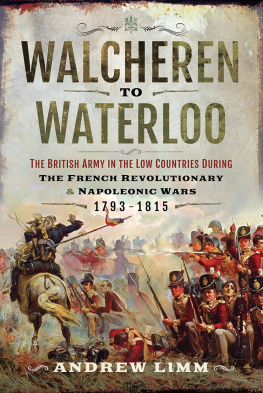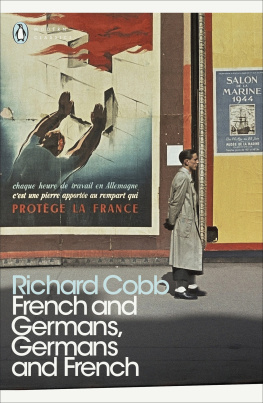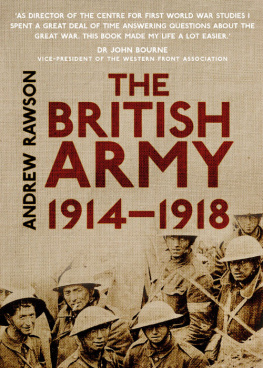This book is a publication of
Indiana University Press
Office of Scholarly Publishing
Herman B Wells Library 350
1320 East 10th Street
Bloomington, Indiana 47405 USA
iupress.indiana.edu
2017 by Andrew Orr
All rights reserved
No part of this book may be reproduced or utilized in any form or by any means, electronic or mechanical, including photocopying and recording, or by any information storage and retrieval system, without permission in writing from the publisher. The Association of American University Presses Resolution on Permissions constitutes the only exception to this prohibition.

The paper used in this publication meets the minimum requirements of the American National Standard for Information SciencesPermanence of Paper for Printed Library Materials, ANSI Z39.481992.
Manufactured in the United States of America
Cataloging information is available from the Library of Congress.
ISBN 978-0-253-02630-9 (cloth)
ISBN 978-0-253-02677-4 (paperback)
ISBN 978-0-253-02678-1 (ebook)
1 2 3 4 5 22 21 20 19 18 17
ACKNOWLEDGMENTS
I AM DEEPLY indebted to the professors who trained and encouraged me both as a graduate student and an undergraduate. Most of all I am grateful to Tom Kselman, my doctoral advisor, for his patience, encouragement, and sage advice. Without fear of exaggeration, I can say that he always knew the right advice to give me and the most tactful way to do it.
During my time in graduate school at the University of Notre Dame I was lucky enough to acquire debts to a number of committed and talented professors, including Doris Bergen, who took the time to teach me how to apply for graduate school successfully and whose friendship and support I still value. Laura Crago invested an inordinate amount of time in improving my writing and teaching me to analyze sources with greater rigor. Gary Hamburgs aggressive questioning forced me to learn to articulate my arguments with greater precision and encouraged me to radically recast my project. I am also grateful to Emily Osborne, Semion Lyandres, and Jim Turner for their assistance. In addition, I am cognizant of the debts I owe to Gaines Post Jr. and Harold Rood, my advisors at Claremont McKenna College. Their teaching methods and research interests continue to shape my work.
I have been fortunate to receive financial support at several critical junctures while researching and writing this book. I am grateful to the Nanovic Institute for European Studies at the University of Notre Dame for helping to fund my initial research and to LInstitut de hautes tudes internationales et du dveloppement in Geneva for providing funding through an Albert Gallatin Fellowship. An Edward Sorin Postdoctoral Fellowship at the University of Notre Dame gave me the time to reevaluate my work and begin the long process of turning it into this book. I am also grateful to Kansas State Universitys College of Arts and Sciences for generously supporting the final stages of my research with a Faculty Enhancement Program grant and a University Small Research Grant.
I would like to thank the editors at Indiana University Press. Gary Dunhams support for this project has been steadfast, and I appreciate his help. I am also grateful to the anonymous reviewers whose careful reading of my manuscript and judicious advice have helped to make this a better book. Brian Bendlins copyediting had greatly improved the quality of this book and I am thankful for his invaluable assistance.
In my time as a graduate student and professor I have been especially blessed to work with a large number of colleagues whose friendship and professional expertise have helped me to develop, refine, and complete this book. I am grateful to Marc DeVore for his comradeship going back to our undergraduate days. I also want to thank Sean Brennan, with whom I spent many hours exchanging ideas. In addition, I am grateful to the Euro Lunch crew from Notre Dame, including Neil Dhingra, Troy Feay, Kari Foster, Mark McCarthy, Miriam Rainbird, Wendy Shrank, Nichole Thompson, and Samy Zaka.
Tina Pham has always been generous with her time and has helped me talk through the problems I have run into while working on this project. I would also like to thank my former flatmate in Geneva, Hebatullah Selim, whose friendship helped me enormously when I was writing far from my family and the rest of my friends. I am also grateful to Meggan and Jamie Keith and William and Zandra Towns, whose friendship in graduate school I have not forgotten.
Since becoming a professor I have been fortunate to continue to accumulate debts of gratitude. In particular I would like to thank Rachel Chrastil, whose advice on how to improve and shape my work has been unerringly wise. Jeff Crane, George Diaz, and Lila Rakoczy have helped me to improve my scholarship even as they have enriched my life with their friendship. I am also grateful to many of my colleagues at Kansas State University for their encouragement and friendship. In different ways David Defries, Al Hampshire, Michael Krysko, Heather McCrea, Bonnie Lynn-Sherow, and Jim Sherow have all gone out of their way to help me and my family both professionally and personally.
Most of all I would like to thank my family for their encouragement and support. My wife Suzanne Orr helped me to conceptualize this book as a project focused on women in the French Army and assisted me as I grappled with European womens history, a field in which I had not originally intended to work. She has lived through this process with me and her encouragement has helped me to keep working even when I wanted to despair. Without her expertise and encouragement I would not have written this book.
I also want to thank my parents Cynthia Bemis and William Orr for everything they have done for me. Their love and sacrifices have helped me throughout my life, and I am deeply grateful to them. Nothing I have accomplished would have been possible without their support.
INTRODUCTION
JEANNE DARCs memory hangs over any study of women and the French military. The fifteenth-century peasant girl from Lorraine who, despite being wounded by an arrow, led French soldiers to victory at Orleans and went on to take Jargeau after suffering a head wound has captivated women and men for nearly six hundred years. Her improbable string of victories turned a dynastic conflict into a holy war that reached its zenith when her army allowed the dauphin to be crowned King Charles VII of France in Reims on July 17, 1429. Even being burned at the stake in Rouen by her English enemies for allegedly practicing witchcraft added to Jeannes romantic appeal by making her a martyr, and later a saint of the Catholic Church. Unfortunately, the heroic image associated with St. Jeanne dArc has, too often, obscured the contributions other women have made to Frances national defense. For all of her prominence, Jeannes story was ordinary in its extraordinariness. Rather than a unique figure, Jeanne dArc was merely the most prominent example of the many individual women who took up arms during the Middle Ages. Other examples included Isabel of Conche, Jeanne de Flandre (Jeanne la Flamme), and Jeanne Florquet (Jeanne Hachette). Although few women fought in field armies, let alone commanded them, like Jeanne dArc, many helped defend cities and castles. In individual instances their contributions were significant, but they were limited and remained extraordinary exceptions to the male preserve of combat. Focusing on the small number of women who either impersonated men or, like Jeanne, fought openly as women in an otherwise male force obscures the broad contributions women have made to national defense and reinforces the faulty assumption that until the twentieth century the military had always been a masculine preserve.

 The paper used in this publication meets the minimum requirements of the American National Standard for Information SciencesPermanence of Paper for Printed Library Materials, ANSI Z39.481992.
The paper used in this publication meets the minimum requirements of the American National Standard for Information SciencesPermanence of Paper for Printed Library Materials, ANSI Z39.481992.
